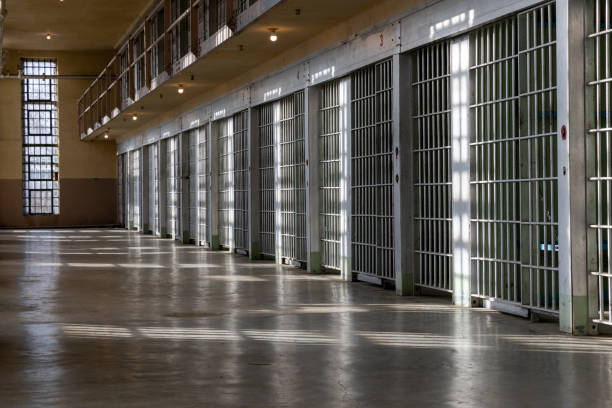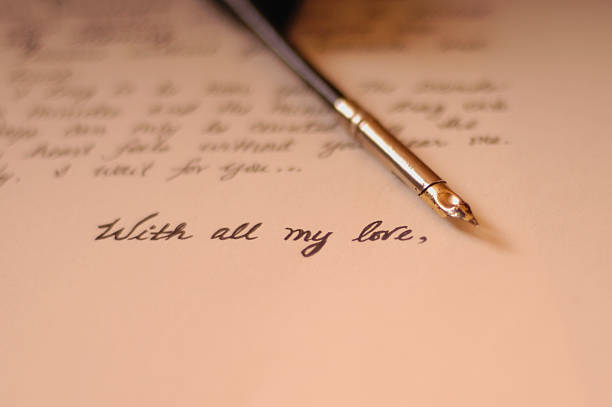How To Write A Jail Scene (13 Best Tips)
In the intricate tapestry of storytelling, crafting a compelling jail scene is an art that goes beyond mere words on a page; it is a symphony of emotions, tension, and authenticity
Whether it’s a pivotal moment in a crime thriller, a transformative experience for a character, or a backdrop for a legal drama, writing a jail scene demands a nuanced approach.
This guide will navigate the labyrinth of intricacies involved in creating a jail scene that resonates with readers. From understanding legal processes and the psychological impact of incarceration to weaving symbolic elements and evolving character arcs, each facet contributes to the vivid portrayal of a jail setting.
Join us on this literary journey as we explore the keys to unlocking the potential of a jail scene, transforming it from a backdrop into a dynamic force within the narrative.
How To Write A Jail Scene
Writing a jail scene involves creating a realistic and engaging portrayal of the setting and characters. Here’s a step-by-step process:
Research and Understand
Start by researching jail facilities, rules, and inmate life to ensure accuracy in your depiction. Understand the legal and procedural aspects.
Define Purpose
Determine the purpose of the jail scene. Is it to build tension, develop characters, or advance the plot? Knowing the goal will guide your writing.
Choose Perspective
Decide on the perspective from which you’ll narrate the scene. Is it from the viewpoint of a prisoner, a guard, or an outsider? Each perspective offers a unique angle.
Establish Setting
Clearly describe the jail setting, including the physical environment, sounds, smells, and overall atmosphere. Consider the time of day and the general mood.
Character Introduction
Introduce the main characters in the jail scene. This includes inmates, guards, and any other relevant individuals. Provide brief but vivid descriptions.
Dialogue
Craft realistic and meaningful dialogue that reflects the characters’ personalities and the tensions within the jail environment. Use slang or specific language that fits the context.
Show Relationships
Illustrate the relationships between characters. This could involve power dynamics, alliances, or conflicts among inmates or between inmates and guards.
Address Routine Activities
Depict routine activities within the jail, such as meals, recreation time, or interactions with visitors. These details add realism to the scene.
Incorporate Conflict
Introduce conflicts or tensions that arise naturally within the jail setting. This could be a confrontation between inmates, a disagreement with a guard, or internal struggles.
Utilize Emotion
Bring out the emotional aspects of the characters. Explore feelings of confinement, fear, frustration, or even moments of unexpected camaraderie.
Follow Legal Procedures
If relevant to your story, ensure that legal procedures and protocols are accurately represented. This adds authenticity to the jail scene.
Build Suspense
If the scene is part of a larger narrative, consider using the jail setting to build suspense or foreshadow events to come.
Revise and Edit
After drafting the scene, revise and edit for clarity, pacing, and impact. Eliminate unnecessary details and ensure the scene contributes meaningfully to the overall story.
Remember to maintain sensitivity and avoid perpetuating stereotypes. The goal is to create a compelling and authentic portrayal of a jail scene that enhances your storytelling.

Research and Understanding
Research and understanding are the twin pillars upon which the skyscraper of knowledge stands, reaching heights previously unimagined.
Delving into the intricate realms of information is not merely a quest for facts but an expedition into the uncharted territories of wisdom.
It’s the art of unraveling mysteries, decoding complexities, and painting a vivid tapestry of comprehension. Like a master detective, one must scrutinize the details, interrogate the nuances, and piece together the puzzle of insight.
It’s not a passive stroll through a library; it’s a dynamic dance with the vast cosmos of ideas, a choreography of intellect and curiosity.
In the symphony of knowledge, research is the conductor, orchestrating the harmonious blend of data, theory, and innovation.
Understanding, its faithful companion, is the resonant melody that lingers long after the final note. Together, they form an unbreakable bond, creating a resonance that echoes through the corridors of intellect, leaving an indelible mark on the landscape of human understanding.
Legal and procedural knowledge
Legal and procedural knowledge is the compass that guides individuals through the labyrinth of justice, ensuring a fair and orderly society.
It serves as the bedrock upon which the edifice of the legal system stands, dictating the rules of engagement and safeguarding the principles of equity.
In the intricate dance of litigation, understanding the legal and procedural intricacies is akin to mastering a complex choreography; every step, every motion, and every nuance matters.
It involves a meticulous study of statutes, regulations, and case law, as well as a nuanced comprehension of courtroom etiquette and legal protocols.
This knowledge is not merely a tool for legal professionals but a shield for individuals navigating the legal landscape.
It empowers citizens to assert their rights, comprehend due process, and participate actively in the administration of justice.
Legal and procedural knowledge, therefore, is not just a set of rules but a gateway to a society where fairness prevails and justice is accessible to all.
Establishing the Scene
Establishing the scene is the literary equivalent of a masterful painter laying the first strokes on a blank canvas, creating a world that beckons readers to step through the looking glass of imagination.
It’s the alchemy of words that conjures the setting into existence, infusing it with life, emotion, and a heartbeat of its own.
Imagine the scene as a pulsating organism, each detail a vital organ contributing to its immersive vitality. The architecture whispers secrets, the lighting orchestrates the mood, and the atmosphere becomes a silent character, weaving its tendrils into the very fabric of the narrative.
In this symphony of description, the scene transcends mere backdrop status; it becomes a co-conspirator, conspiring with the characters to lure readers into a parallel universe where the ordinary transforms into the extraordinary.
The art of establishing a scene is not just about words on paper; it’s about crafting a portal that beckons readers to embark on an unforgettable journey into the realms of the extraordinary and the unknown.
Detailed description of the physical setting
A detailed description of the physical setting is the literary alchemy that transmutes mere words into a vivid, immersive tapestry.
It’s not just about conveying the skeletal structure of the environment; it’s about breathing life into the surroundings, making them pulse with an almost palpable energy.
Each nuance, from the architectural intricacies to the play of light and shadow, is meticulously woven into the narrative fabric.
Imagine the setting as a character with its own unique personality – the crackling echoes of footsteps on cobblestone streets, the scent of aged leather in a study, or the hum of neon lights in a bustling city.
Through this intricate dance of details, the physical setting becomes a living, breathing entity that not only frames the characters’ actions but also resonates with the reader’s senses, allowing them to step into the scene and experience its every heartbeat.
The magic lies in the minutiae, and a well-crafted description of the physical setting is the conjurer’s wand, bringing the fictional world to life.
Building Tension
Building tension is the literary tightrope walk where every word is a delicate step, and every sentence is a pulsating heartbeat, leading readers to the edge of their seats.
It’s the art of weaving anticipation into the very fabric of a narrative, creating a symphony of suspense that reverberates in the minds of those who dare to traverse the author’s labyrinth.
Like a master puppeteer, the writer manipulates the strings of emotions, tightening them with each turn of phrase until the reader is ensnared in the exquisite agony of uncertainty.
It’s not just about what is said but the pregnant pauses between the lines, the unspoken threats lingering in the air, and the mounting pressure that crackles like electricity.
Building tension is a literary chess game where the author and the reader engage in a duel of wits, each move heightening the stakes until the climax becomes an inevitability, a cathartic release of the breath that has been held for far too long.
It’s not just storytelling; it’s an invitation to experience the delicious agony of the unknown.
Utilizing dialogue effectively
Utilizing dialogue effectively is akin to orchestrating a symphony of voices that not only convey information but breathe life into characters and propel the narrative forward.
It goes beyond the exchange of words, delving into the nuances of speech that reveal the subtleties of personalities, motivations, and emotions.
A well-crafted dialogue is a dance, a delicate interplay between speakers that resonates with authenticity. It’s about crafting conversations that are not just a means of communication but a dynamic force shaping relationships and steering the plot.
The art lies in the unsaid – the pregnant pauses, the loaded silences, and the unspoken subtext that lingers in the air.
Effective dialogue is a window into the souls of characters, allowing readers to eavesdrop on the intricacies of their thoughts and conflicts.
It’s the heartbeat of a story, a rhythm that, when orchestrated with finesse, can elevate a narrative from mere words on a page to a vibrant, living tapestry of human experience.
Legal Realism
Legal realism is the kaleidoscope through which the black and white canvas of law transforms into a vibrant spectrum of societal dynamics.
It’s not merely the study of statutes and cases but an exploration of the living, breathing organism that is the legal system.
Legal realism acknowledges that law is not an abstract concept existing in isolation; rather, it is shaped and molded by the ever-evolving landscape of human behavior, culture, and socio-economic forces.
It’s a daring dive into the turbulent waters of the courtroom, where the clash of legal ideals and pragmatic realities creates ripples that echo far beyond the hallowed halls of justice.
Legal realism is the rebel yell in a world of legal formalism, challenging us to see law not as an ivory tower but as a dynamic force, intertwined with the complexities of human existence.
It’s a call to embrace the shades of gray, recognizing that the law is not a static monolith but a living organism, evolving and adapting in tandem with the heartbeat of society.
Accurate portrayal of legal processes
An accurate portrayal of legal processes is the compass that guides the narrative through the intricate maze of jurisprudence, ensuring that the story resonates with authenticity and credibility.
It involves meticulous attention to the procedural dance within courtrooms, law offices, and legal corridors, portraying the ebbs and flows of legal battles with precision.
From arrest to trial, each step must be choreographed with fidelity to real-world legal intricacies, capturing the gravity and nuances of legal proceedings.
It’s not just about getting the legal jargon right, but also delving into the emotional and strategic aspects that color every case.
An accurate portrayal of legal processes adds a layer of depth to the narrative, fostering a connection between the reader and the story’s legal landscape.
It transforms the legal framework from a mere backdrop into an active participant, shaping characters and plotlines with the weight of authentic legal realism.
Character Development
Character development is the alchemical art of breathing life into ink and paper, transforming two-dimensional sketches into vibrant, multidimensional personalities that linger in the reader’s psyche.
It’s a journey of metamorphosis, a narrative crucible where the crucible of conflict shapes the raw ore of personalities into refined, complex individuals.
Characters are not static entities; they are dynamic entities that evolve, unravel, and redefine themselves within the crucible of the narrative.
It’s about more than just quirks and traits; it’s the delicate dance of vulnerabilities, strengths, and internal conflicts that make characters resonate like a familiar melody.
Character development is the magic that turns fictional beings into mirrors, reflecting the spectrum of human emotions and experiences.
Like a literary sculptor, the writer molds characters not just as figures in a story but as vessels carrying the essence of relatable humanity, inviting readers to walk alongside them on their transformative odyssey.
Evolving character arcs within the jail context
Evolving character arcs within the jail context are akin to a crucible of transformation, where the harsh constraints of incarceration become the forge that shapes characters in unexpected ways.
The sterile, unforgiving environment of a jail setting acts as a pressure cooker, intensifying the internal struggles and external conflicts that characters must navigate.
It’s within the cold, steel confines that vulnerabilities are laid bare, resilience is tested, and the true nature of individuals surfaces.
A character’s journey within the jail context is not just a narrative trajectory; it’s a profound exploration of survival, self-discovery, and the indomitable spirit in the face of adversity.
The jail becomes a crucible where flaws are magnified, alliances are formed or shattered, and the trajectory of a character’s life takes unexpected detours.
The evolving character arcs within the jail context are a testament to the transformative power of confinement, where the shackles of circumstance become the catalyst for profound metamorphosis.

Emotional Impact
Emotional impact is the seismic resonance that ripples through the pages of a narrative, leaving an indelible mark on the reader’s heart and mind. It’s the literary thunderstorm that brews on the horizon, promising a torrent of feelings that will soak the soul.
Like an emotional architect, the writer constructs scenes that are not mere words on paper but conduits for empathy, sorrow, joy, and catharsis.
The impact is not measured in sentences but in the echoes of emotion that reverberate long after the last page is turned.
It’s about crafting characters and moments that don’t just exist within the story but reach out, grab the reader by the emotional core, and refuse to let go.
Emotional impact is the secret ingredient that transforms a narrative from a sequence of events into an immersive experience, where the reader doesn’t just observe the story; they feel it coursing through their veins, awakening dormant sentiments and creating a literary symphony of the heart.
Eliciting reader empathy
Eliciting reader empathy is the delicate dance of literary sorcery, where the writer becomes a virtuoso orchestrator of emotions.
It’s the art of creating characters so authentic, so vivid, that readers can’t help but forge a connection that transcends the boundaries of fiction.
Through meticulous storytelling, writers weave a tapestry of human experience, inviting readers to step into the shoes of characters and experience their joys, sorrows, and struggles.
Empathy is not just about shared circumstances; it’s about unraveling the universal threads of emotion that bind humanity together.
Whether it’s a triumph or a heart-wrenching defeat, the writer’s alchemy lies in crafting moments that resonate with the reader’s own life experiences, stirring a profound emotional response.
Eliciting reader empathy is the literary magic that transforms a solitary act of reading into a shared voyage of the heart, where the emotions of characters become the reader’s own, and the boundaries between reality and fiction blur into a seamless, empathetic tapestry.
Plot Progression
Plot progression is the heartbeat of storytelling, a rhythmic dance that propels the narrative forward with an irresistible cadence.
It’s not merely a linear march from point A to B but a dynamic, unpredictable journey where each twist and turn beckons the reader to explore uncharted territories.
Like a masterful chef layering flavors in a gourmet dish, the writer delicately intertwines subplots, conflicts, and revelations, creating a tapestry of suspense that leaves readers both breathless and eager for more.
Plot progression is the siren’s call that lures readers deeper into the labyrinth of the narrative, where every revelation is a breadcrumb leading to a grand crescendo.
It’s the art of narrative seduction, where anticipation builds like a symphony, and the resolution becomes a satisfying crescendo that echoes long after the final page.
In the realm of plot progression, storytelling transcends mere events; it becomes an immersive experience, an enchanting journey where every step forward is a discovery, and every revelation is a triumph of literary alchemy.
Integrating the jail scene into the overall narrative
Integrating the jail scene into the overall narrative is akin to seamlessly weaving a dark, compelling thread into the intricate tapestry of the story.
The jail scene is not an isolated episode but a pivotal moment that resonates with reverberations throughout the entire narrative.
Like a strategic chess move, its integration requires finesse, ensuring it harmonizes with the broader plot, character arcs, and thematic elements.
The jail becomes more than a setting; it becomes a crucible where the characters’ mettle is tested, forging alliances, deepening conflicts, and catalyzing transformative moments.
As the jail scene intersects with the overarching story, it adds layers of complexity, injecting tension, emotion, and a profound impact that echoes across the narrative landscape.
Integrating the jail scene is not about introducing a plot point but about infusing the entire story with the palpable aftermath, making every subsequent chapter resonate with the haunting echoes of confinement and the indomitable spirit to endure.
Symbolism and Metaphor
Symbolism and metaphor are the literary conjurers that transmute mere words into a kaleidoscope of meaning, where every phrase becomes a hidden doorway to a realm of deeper understanding.
They are the architects of the unsaid, the alchemists turning prose into a tapestry woven with threads of allegory and nuance.
Like whispers in a crowded room, symbolism and metaphor invite readers to decipher the secret codes beneath the surface, to explore the layers of meaning that transcend the literal.
Each symbol is a silent protagonist, carrying the weight of multiple interpretations, and every metaphor is a journey into the abstract landscapes of emotion and thought.
In the realm of storytelling, symbolism and metaphor are not embellishments; they are the keys to unlocking the chambers of profound resonance, transforming narratives into universes where every word is a vessel for unspoken truths and elusive revelations.
Using the jail setting as a metaphor
Using the jail setting as a metaphor is akin to employing a powerful and evocative language of confinement and liberation within the broader narrative.
The cold, unforgiving walls of a jail become more than physical barriers; they morph into a potent symbol of societal constraints, personal struggles, and the quest for freedom.
Each clanging cell door resonates as a metaphorical echo of oppression, while the narrow windows become portals through which characters glimpse the possibility of redemption.
The jail, in its stark reality, transforms into a crucible where the characters confront their inner demons, grapple with injustice, or find resilience amid adversity.
By using the jail setting as a metaphor, writers can delve into the complexities of confinement, loss of autonomy, and the universal quest for liberation, infusing the narrative with layers of meaning that extend far beyond the physical confines of the prison walls.
Revision and Editing
Revision and editing are the unsung sorcerers of the storytelling realm, the literary alchemists who transform a rough manuscript into a polished masterpiece.
It’s not merely a cosmetic touch-up but a dance with the soul of the narrative, a meticulous excavation that unearths hidden gems and chisels away the excess.
Imagine a sculptor carving a statue from a block of marble; revision is the process of refining the contours, while editing is the fine art of smoothing every surface to perfection.
Each revision is a conversation with the manuscript, a call and response that hones the prose, sharpens the dialogue, and stitches together the seams of the plot.
Editing, on the other hand, is the literary gardener pruning away the unnecessary foliage, allowing the narrative to breathe and flourish.
Together, revision and editing are the architects of literary metamorphosis, turning a manuscript into a work of art that captivates, resonates, and lingers in the reader’s mind like a haunting melody.
Fine-tuning language and tone
Fine-tuning language and tone is the delicate art of crafting prose with the precision of a master watchmaker. It’s the meticulous process of selecting words that not only convey meaning but also evoke the desired emotional resonance.
Like a symphony conductor fine-tuning each instrument, the writer refines the language to achieve the perfect harmony of cadence and nuance.
The tone, an invisible brushstroke that paints the atmosphere of the narrative, is calibrated to resonate with the intended mood, whether it be suspense, warmth, or melancholy.
This linguistic symphony is not a mere string of sentences; it’s an orchestration of emotions and atmospheres that beckons readers to feel the story as much as they understand it.
Fine-tuning language and tone is the literary maestro’s final rehearsal, ensuring that every word strikes the right chord, creating a narrative symphony that lingers in the reader’s mind like a haunting melody.
Frequently Asked Questions about How To Write A Jail Scene
How can I make my jail scene authentic and realistic?
Ensure authenticity by conducting thorough research on jail facilities, procedures, and inmate life. Pay attention to details like environment, sounds, and routines to create a believable setting.
What perspective should I choose for my jail scene?
The perspective depends on your narrative goals. Consider telling the scene from the viewpoint of a prisoner, a guard, or an outsider. Each perspective offers a different insight into the jail environment.
How do I establish the atmosphere of a jail setting?
Clearly describe the physical surroundings, including sounds, smells, and overall ambiance. Consider the time of day and the mood you want to convey in the scene.
What are some essential elements to include when introducing characters in a jail scene?
Provide brief yet vivid descriptions of the main characters, including inmates, guards, and any other relevant individuals. Highlight unique traits that contribute to the overall dynamic.
How can I craft realistic dialogue for a jail scene?
Use language appropriate to the characters and setting. Incorporate slang or specific terms used in the context of a jail. Ensure that the dialogue reflects the personalities and tensions within the jail environment.
Should I include conflicts in my jail scene, and how can I make them compelling?
Yes, conflicts can add depth to the scene. Introduce tensions, disagreements between inmates, conflicts with guards, or internal struggles. Make sure the conflicts contribute meaningfully to the overall narrative.
Are there specific emotions I should focus on when writing a jail scene?
Explore a range of emotions, including feelings of confinement, fear, frustration, and unexpected camaraderie. Show the emotional impact of the jail environment on the characters involved.
How can I avoid perpetuating stereotypes in my portrayal of a jail scene?
Be conscious of stereotypes and strive to depict a diverse range of characters with depth. Avoid relying on clichés and engage in nuanced storytelling that challenges preconceptions.
Should I incorporate legal procedures in my jail scene, and how do I do it accurately?
If relevant to your story, incorporate accurate legal procedures and protocols. Research the legal aspects of jail life to ensure that your portrayal aligns with reality and adds authenticity to the scene.
How can I use a jail scene to build suspense in my narrative?
Introduce elements of suspense by incorporating conflicts or foreshadowing future events. Consider the consequences of the jail scene within the broader context of your story to keep readers engaged.
Conclusion
In conclusion, crafting a compelling jail scene requires a careful balance of authenticity, creativity, and sensitivity.
Thorough research into the intricacies of jail life, legal procedures, and the emotional impact on characters is paramount to building a realistic setting.
Choosing the right perspective and incorporating vivid details about the environment and characters contribute to the overall atmosphere.
Dialogue that reflects the unique language of the jail setting, conflicts that add depth, and a focus on diverse emotions elevate the scene.
It’s essential to approach the portrayal with a nuanced perspective, avoiding stereotypes and presenting a diverse range of characters.
By carefully considering these elements, a writer can create a jail scene that not only serves its immediate narrative purpose but also contributes to the overall richness and authenticity of the storytelling.






